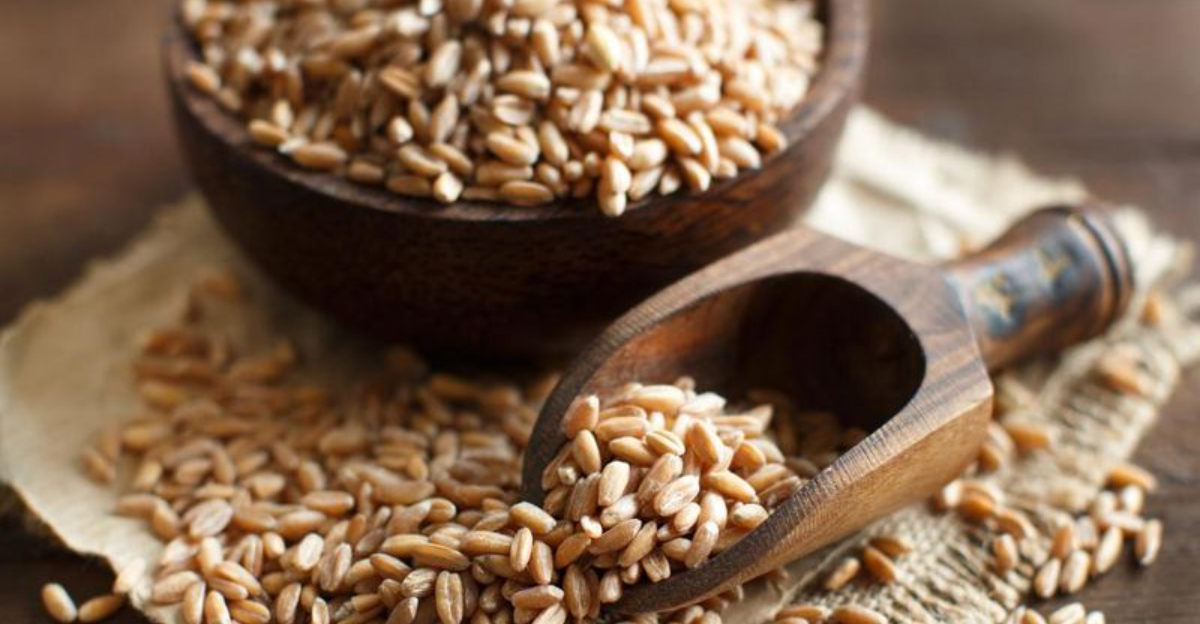20 Meat-Free Foods That Are Packed With Protein

Looking for ways to boost your protein intake without eating meat? You’re in luck. The plant kingdom offers plenty of protein-rich options that can help you meet your nutritional needs.
Whether you’re a vegetarian, vegan, or simply trying to reduce your meat consumption, these foods will keep your muscles strong and your body energized.
1. Lentils: The Humble Protein Powerhouse
One cup of cooked lentils delivers a whopping 18 grams of protein. These tiny legumes come in various colors, including brown, green, red, and black, each with slightly different cooking times and flavors.
My grandmother used to make lentil soup every Sunday, claiming it gave her the strength to chase after six grandchildren. She might have been onto something.
Lentils also provide fiber, folate, and iron, making them nutritional superstars.
2. Chickpeas: Versatile Protein Gems
Chickpeas contain about 15 grams of protein per cup when cooked. Their nutty flavor and versatility make them a favorite in countless dishes around the world, from hummus to curries. Beyond protein, chickpeas offer manganese, folate, and fiber.
Their firm texture holds up well in salads, while they blend beautifully into creamy dips and can even be roasted for a crunchy snack.
3. Tofu: The Chameleon of Plant Proteins
With approximately 20 grams of protein per cup, tofu is a soy-based protein champion. Its mild flavor absorbs whatever seasonings you pair it with, making it incredibly adaptable in the kitchen.
I once served crispy tofu bites to my meat-loving brother without telling him what it was. He devoured the entire plate and asked for more.
Tofu comes in different firmness levels, from silken (perfect for smoothies) to extra-firm (great for grilling).
4. Quinoa: The Ancient Grain That’s Actually A Seed
Quinoa provides about 8 grams of protein per cooked cup. Unlike most plant foods, quinoa contains all nine essential amino acids, making it a complete protein source similar to meat.
Originally cultivated by the Incas, who called it the “mother grain,” quinoa has a slightly nutty flavor and pleasantly chewy texture.
Its tiny seeds cook in just 15 minutes and can be used in everything from breakfast bowls to dinner sides.
5. Tempeh: Fermented Protein Blocks
Tempeh offers an impressive 31 grams of protein per cup. This traditional Indonesian food is made from fermented soybeans pressed into firm, sliceable cakes with a distinctive nutty flavor and chewy texture.
The first time I tried tempeh, I was skeptical of its appearance. Those white patches? That’s just the beneficial mold from fermentation.
The fermentation process makes tempeh’s nutrients more bioavailable and easier to digest than many other soy products.
6. Edamame: Green Soybeans With Impressive Stats
Edamame beans pack 17 grams of protein per cup. These young soybeans are harvested while still green and soft, then typically served steamed and lightly salted as a snack or appetizer.
During my first visit to a Japanese restaurant, I watched in confusion as people popped these beans from their pods directly into their mouths.
Now they’re my favorite pre-dinner nibble. Edamame also provides fiber, folate, and vitamin K.
7. Nutritional Yeast: Cheesy Protein Flakes
Two tablespoons of nutritional yeast contain about 8 grams of protein. These yellow flakes have a surprisingly cheesy, nutty flavor that many vegans use to add a savory kick to dishes.
Nutritional yeast is deactivated, meaning it won’t make bread rise like active yeast. It’s typically fortified with B vitamins, including B12, which can be difficult to get on a plant-based diet.
Sprinkle it on popcorn, pasta, or roasted vegetables for a protein boost.
8. Seitan: Wheat Meat With Meaty Texture
Seitan contains about 25 grams of protein per 3.5 ounces, rivaling many meats. Made from vital wheat gluten, it has a remarkably meat-like texture that makes it popular in vegetarian versions of traditional meat dishes.
The first time I served seitan stir-fry to friends, they were convinced they were eating chicken. Its chewy, dense texture absorbs flavors well.
Note that seitan is pure gluten, so it’s not suitable for those with celiac disease or gluten sensitivity.
9. Peanut Butter: Creamy Protein Spread
Two tablespoons of peanut butter provide about 8 grams of protein. This beloved spread combines protein with healthy fats to create a satisfying snack that keeps hunger at bay.
Natural peanut butter contains just peanuts and sometimes salt, avoiding added sugars and oils. The oils may separate, requiring a good stir before use.
Beyond sandwiches, peanut butter adds protein to smoothies, oatmeal, and sauces for noodle dishes.
10. Chia Seeds: Tiny Seeds With Big Nutrition
Two tablespoons of chia seeds contain about 4 grams of protein. These tiny black or white seeds were once a staple food of the Aztecs and Mayans, prized for their energy-giving properties.
When soaked in liquid, chia seeds develop a gel-like coating, making them perfect for puddings and as egg replacers in baking. I keep a jar on my kitchen counter and sprinkle them on practically everything.
They’re also packed with omega-3 fatty acids and fiber.
11. Hemp Seeds: Nutty Protein Nuggets
Three tablespoons of hemp seeds provide about 10 grams of protein. These small, soft seeds have a mild, nutty flavor that complements both sweet and savory dishes.
Hemp seeds contain all nine essential amino acids, making them a complete protein source. They’re also rich in healthy fats, including omega-3s.
Unlike their cannabis cousin, hemp seeds contain negligible amounts of THC, so they won’t produce any psychoactive effects.
12. Greek Yogurt: Creamy Dairy Protein
One cup of Greek yogurt packs an impressive 20 grams of protein. The straining process that creates Greek yogurt removes much of the liquid whey, concentrating the protein and creating that signature thick texture.
My morning routine changed forever when I discovered Greek yogurt topped with fruit and honey. The tangy flavor pairs wonderfully with both sweet and savory ingredients.
Choose plain varieties to avoid added sugars, then customize with your favorite toppings.
13. Almonds: Protein-Packed Tree Nuts
A quarter-cup of almonds provides about 7 grams of protein. These versatile nuts make a convenient snack and add crunch and nutrition to many dishes. Almonds also deliver healthy fats, fiber, vitamin E, and magnesium.
Their slightly sweet flavor works in both sweet and savory contexts. Raw, roasted, sliced, or ground into butter, almonds are one of the most versatile protein sources in the plant kingdom.
14. Cottage Cheese: Lumpy Protein Treasure
One cup of cottage cheese contains about 25 grams of protein. This mild, soft cheese consists of curds of pasteurized cow’s milk with a bit of salt and sometimes cream added. Growing up, my athlete dad always had cottage cheese in the fridge for quick protein hits.
The lumpy texture might seem strange at first, but many come to love it. Available in various fat contents from nonfat to full-fat, it works well in both sweet and savory applications.
15. Spirulina: Blue-Green Protein Algae
Just one tablespoon of spirulina powder contains about 4 grams of protein. This blue-green algae is one of the most protein-dense foods on the planet, containing up to 70% protein by dry weight.
Spirulina has a strong, distinctive taste that’s best masked in smoothies or juices. Its deep green color will turn your smoothie an interesting shade of blue-green.
Beyond protein, spirulina offers iron, B vitamins, and various antioxidants.
16. Pumpkin Seeds: Crunchy Protein Snacks
A quarter-cup of pumpkin seeds delivers about 9 grams of protein. Also known as pepitas, these flat, oval seeds have a chewy texture and subtly sweet, nutty flavor.
Every autumn when carving pumpkins, my family would roast the seeds with different seasonings. The kitchen would fill with amazing aromas.
Pumpkin seeds are particularly rich in magnesium, zinc, and antioxidants, making them nutritional champions beyond just their protein content.
17. Oats: Hearty Breakfast Protein
One cup of cooked oatmeal provides about 6 grams of protein. This humble grain has been a breakfast staple for centuries, offering sustained energy through the morning.
I never appreciated oats until I discovered steel-cut varieties with their chewy texture and nutty flavor. So different from the mushy stuff I avoided as a kid.
Oats also contain a special type of fiber called beta-glucan that helps lower cholesterol levels.
18. Spelt: Ancient Grain With Modern Appeal
One cup of cooked spelt contains about 11 grams of protein. This ancient relative of wheat has been cultivated for over 7,000 years and is making a comeback in health-conscious kitchens.
Spelt has a nutty, slightly sweet flavor that’s more complex than modern wheat. Its chewy texture holds up well in soups and salads.
While spelt does contain gluten, some people who have wheat sensitivities find they can tolerate it better than common wheat.
19. Amaranth: Tiny Protein-Rich Pseudo-Grain
One cup of cooked amaranth contains about 9 grams of protein. This tiny seed was a staple food of the Aztecs and is considered a pseudo-grain because it’s not from the grass family like true grains.
Amaranth has a slightly peppery flavor and sticky texture when cooked. The tiny grains pop in your mouth, creating an interesting sensory experience.
Amaranth is also rich in calcium, magnesium, and iron, making it nutritionally superior to many true grains.
20. Ezekiel Bread: Sprouted Grain Protein Loaf
Two slices of Ezekiel bread provide about 8 grams of protein. This bread is made from sprouted whole grains and legumes, typically including wheat, barley, millet, spelt, soybeans, and lentils.
The sprouting process increases the availability of nutrients and makes them easier to digest. My health-conscious aunt introduced me to this bread years ago, and I was surprised by its hearty, nutty flavor.
Unlike most breads, you’ll find Ezekiel bread in the freezer section of many stores.
